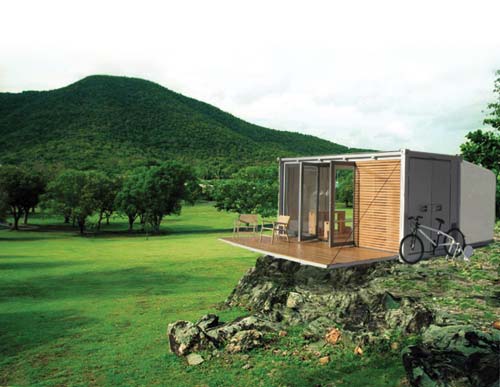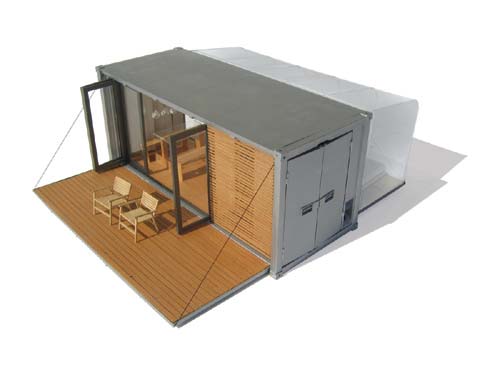
In import export business it’s popularly known as “Twenty-footer”; in the official jargon of international trade it’s referred to as TEU, a Twenty-foot Equivalent Unit. The length is 20-feet, the width 8-feet, the height 8.5 or 9.5 feet. The 20-footer has a brother twice the size, a 40-footer. Aside ports and industrial loading docks profusion of containers get discarded each year as they become too expensive to return when cargo had been delivered and the buyer had paid for the unit as part of the deal. News clips show container freight ships sailing between the continents with containers loaded aboard so high they exude appearance of city skylines. Fact is heaps of these containers sit empty in ports, especially during economic downturn periods such the one we now experience. It is precisely in this era that sees rising number of homeless that Adam Kalkin’s idea to use shipping containers to create inexpensive, recyclable housing makes more sense than ever.

Over the last couple decades indeed whole trend of container architecture has evolved around recycling empty shipping containers. In British Columbia a non-profit team of designers and businesses, BARK, took a standard ISO shipping container very seriously and created an efficient family home showcasing Canada’s innovative design talent and contemporary style. The shipping container house unit, coined The All Terrain Cabin, can be easily folded up and transported by train, truck, or ship, and once it arrives, it unfolds to 480 square feet of self-contained, sophisticated living space, functionally equipped to accommodate a family of four including a pet with all the comforts of home. If vernacular architecture implies using local methods of construction and locally available resources to address local needs then the Canadians certainly point out that container architecture has potential to explore vernacular design solutions elsewhere around the globe as the shipping containers are available worldwide and this is indeed the time period to experiment with recycling precisely these type of available sources namely to address the needs of the homeless and the poor. Needless to say, because the container can be easily transported, it can also fit the needs of travelers that demand comforts of home away from home.
